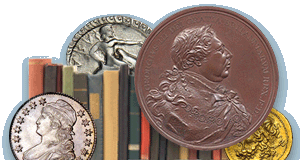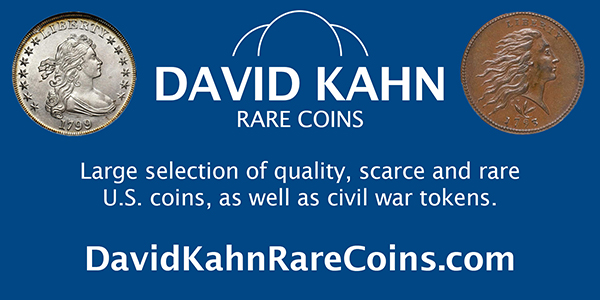
PREV ARTICLE
NEXT ARTICLE
FULL ISSUE
PREV FULL ISSUE
1715 FLEET: 1,000 COIN TREASURE CHEST FINDThe 1715 Fleet Society is a non-profit organization that is "dedicated to researching the history of the 1715 Fleet, its loss, rediscovery, and recovery." The 1715 fleet was part of the Spanish New World Treasure Fleets that funded Spain's activities as a world leader. Each month the group highlights a "Treasure of the Month". This month's treasure is a doozy. Here's an excerpt - see the complete article online. Images and text courtesy of 1715 Fleet – Queens Jewels, LLC. -Editor The 1715 Fleet Society is truly privileged to be able to present October's Treasure of the Month. Today, the Society has been accorded the honor of being one of the few agencies chosen to announce to the world a significant recovery from one of the wreck sites of the 1715 Fleet. That recovery is the subject matter of our Treasure of the Month. In the summer of 2025, Captain Levin Shavers and the crew of the M/V Just Right made a significant discovery … over 1,000 silver eight reales coins, along with several gold coins and artifacts found in one location. Nothing like this has been seen in 35 years. Actually, 1990, to be exact. That was the last year that a recovery of this many silver coins found together occurred. This current recovery recalls the glory days of the 1960s, when thousands of silver coins were often found like this on a single day. Finding so many coins in the same spot suggests that they were part of a chest that came apart when the ships were destroyed in the hurricane that consumed the Fleet on July 31, 1715. There have been two instances in the past where the remains of actual treasure chests were found on Fleet wreck sites. These chests were recovered near the Cabin Wreck site in July 1965 and June 1967. Ironically, they were found about 80 feet apart. Each chest consisted of three sacks of coins, 1,500 to a sack. So, this is good circumstantial evidence that the find here may indeed be the remnants of the contents of a treasure chest. These coins show evidence of being buried in the sand for a long time because most are solid coins with good weight. Coins that have been exposed to turbulent waters often are thin and light, unlike our featured treasure coins. Below are the coins being inventoried by Captain Levin Sanders. In addition to the remarkable recovery of these silver coins, other treasures were also brought up. Here are several gold two escudos from the Spanish colonial mint at Bogota, as found, along with two eight escudos from the Mexico City mint. Gold dust and gems were also part of this recovery. A press release was issued by 1715 Fleet – Queens Jewels, LLC, on September 30, 2025. Here's an excerpt - see the complete article online. -Editor
Over 1,000 Silver and Gold Coins Recovered from the
1715 Treasure Fleet Shipwrecks Valued at $1,000,000. 1715 Fleet – Queens Jewels, LLC, a historic shipwreck salvage operation that owns the exclusive salvage rights to the remains of the 1715 Treasure Fleet, announces remarkable archaeological and historical recoveries. Over 1000 silver coins known as Reales were recovered by Capt. Levin Shavers and the crew of the M/V Just Right. In addition, 5 gold coins called Escudos and other rare gold artifacts were recovered during the 2025 summer salvage season. The coins, preserved beneath centuries of sand and sea, are part of the vast fortune carried by the fleet, which was transporting New World riches back to Spain when disaster struck on July 31, 1715. Historians estimate that as much as $400 million worth of gold, silver, and jewels were lost in the storm, making it one of the greatest maritime tragedies—and treasures—of the Americas. "This discovery is not only about the treasure itself, but the stories it tells," said Sal Guttuso, Director of Operations. "Each coin is a piece of history, a tangible link to the people who lived, worked, and sailed during the Golden Age of the Spanish Empire. Finding 1,000 of them in a single recovery is both rare and extraordinary." The coins, known as pieces of eight, were minted in the Spanish colonies of Mexico, Peru, and Bolivia. Many still bear visible dates and mint marks, making them important to historians and collectors alike. The condition of the coins suggests they were part of a single chest or shipment that spilled when the ship broke apart in the hurricane's fury.
To read the complete article, see:
Thanks also to Pablo Hoffman, Leon Saryan, Paul Horner and others who passed along articles on the find. Here's a video. -Editor
For other articles on the topic, see:
For more information on the 1715 Fleet Society, see:
To read the earlier E-Sylum article, see:
Wayne Homren, Editor The Numismatic Bibliomania Society is a non-profit organization promoting numismatic literature. See our web site at coinbooks.org. To submit items for publication in The E-Sylum, write to the Editor at this address: whomren@gmail.com To subscribe go to: Subscribe All Rights Reserved. NBS Home Page Contact the NBS webmaster 
|







